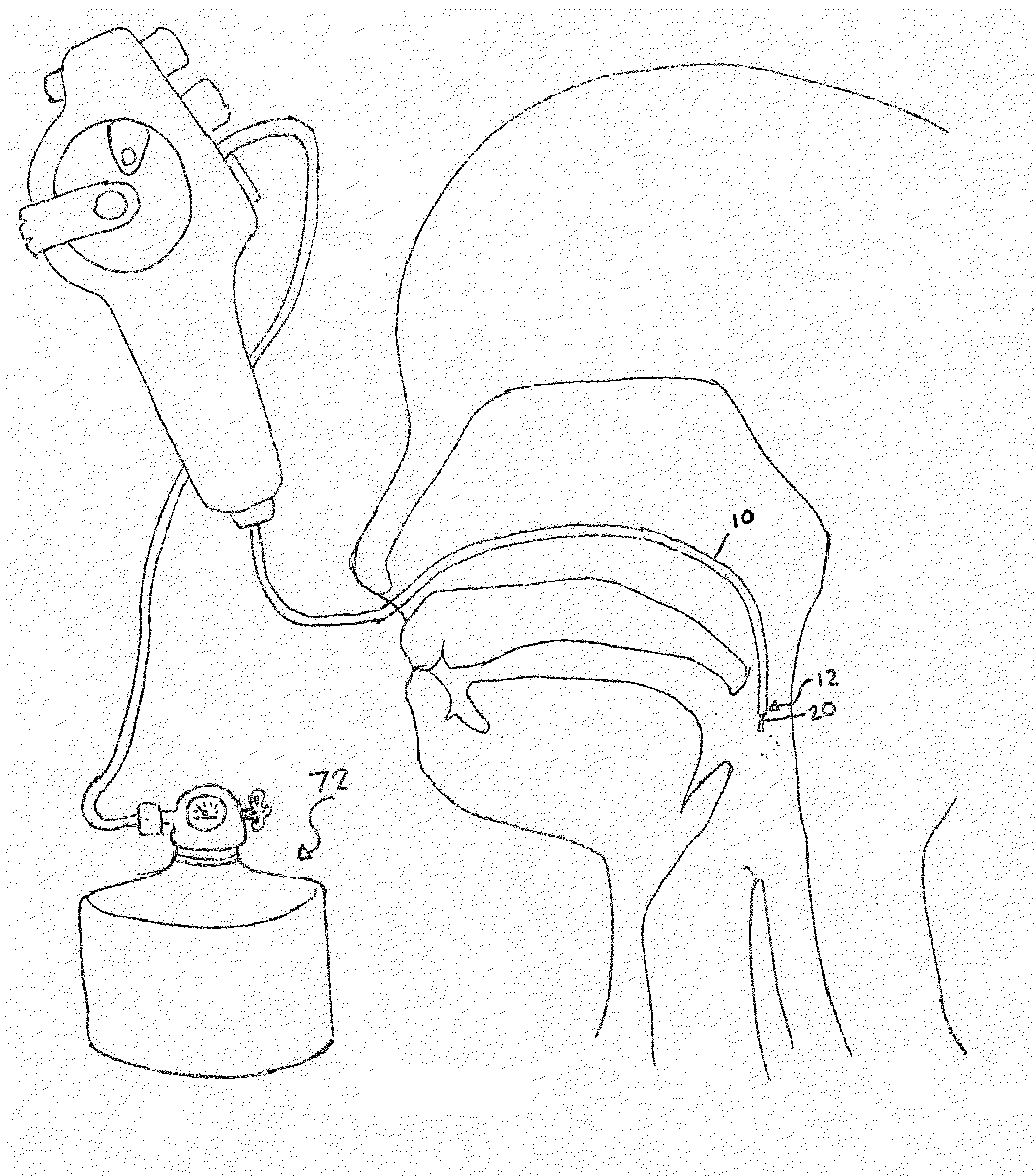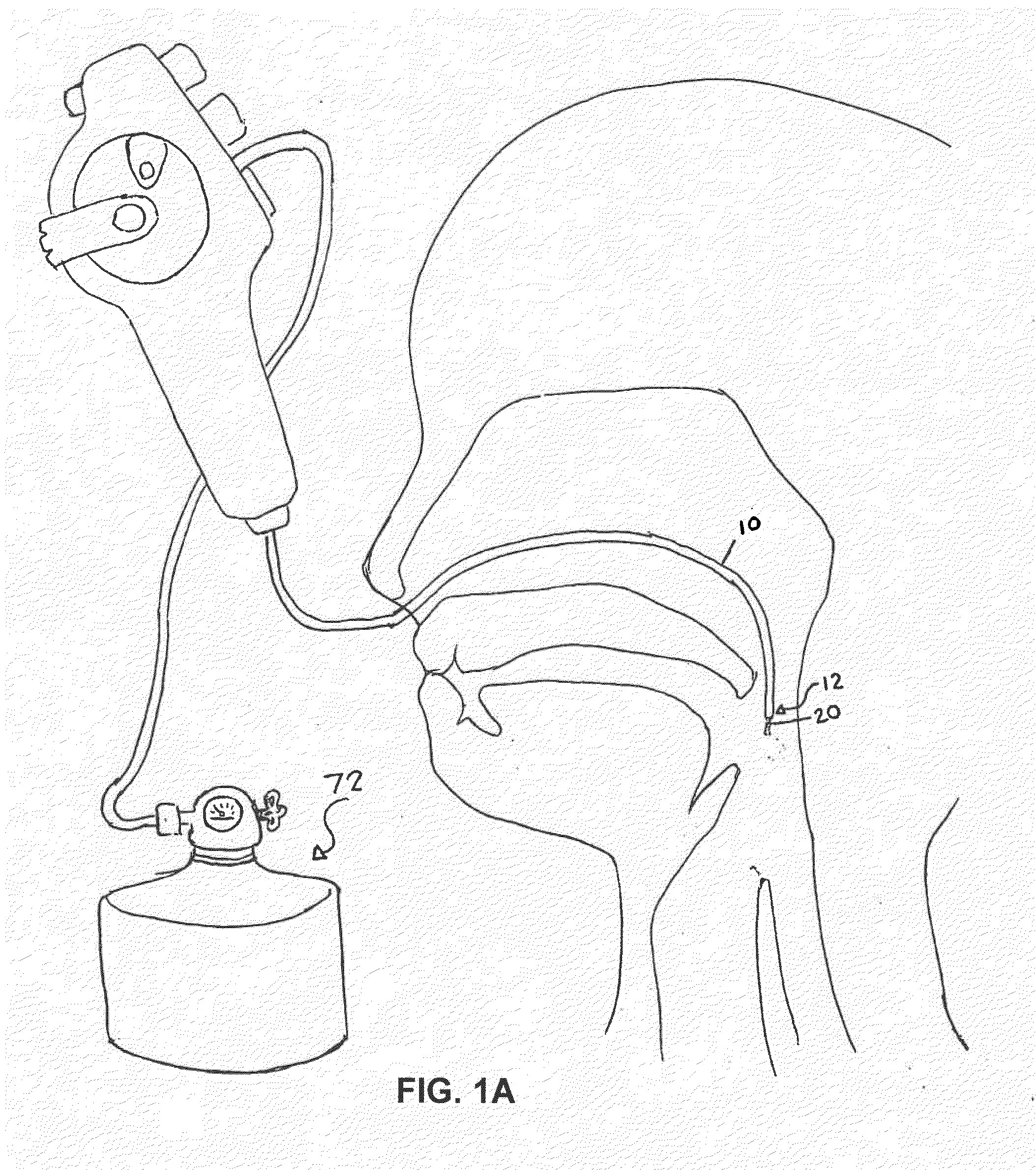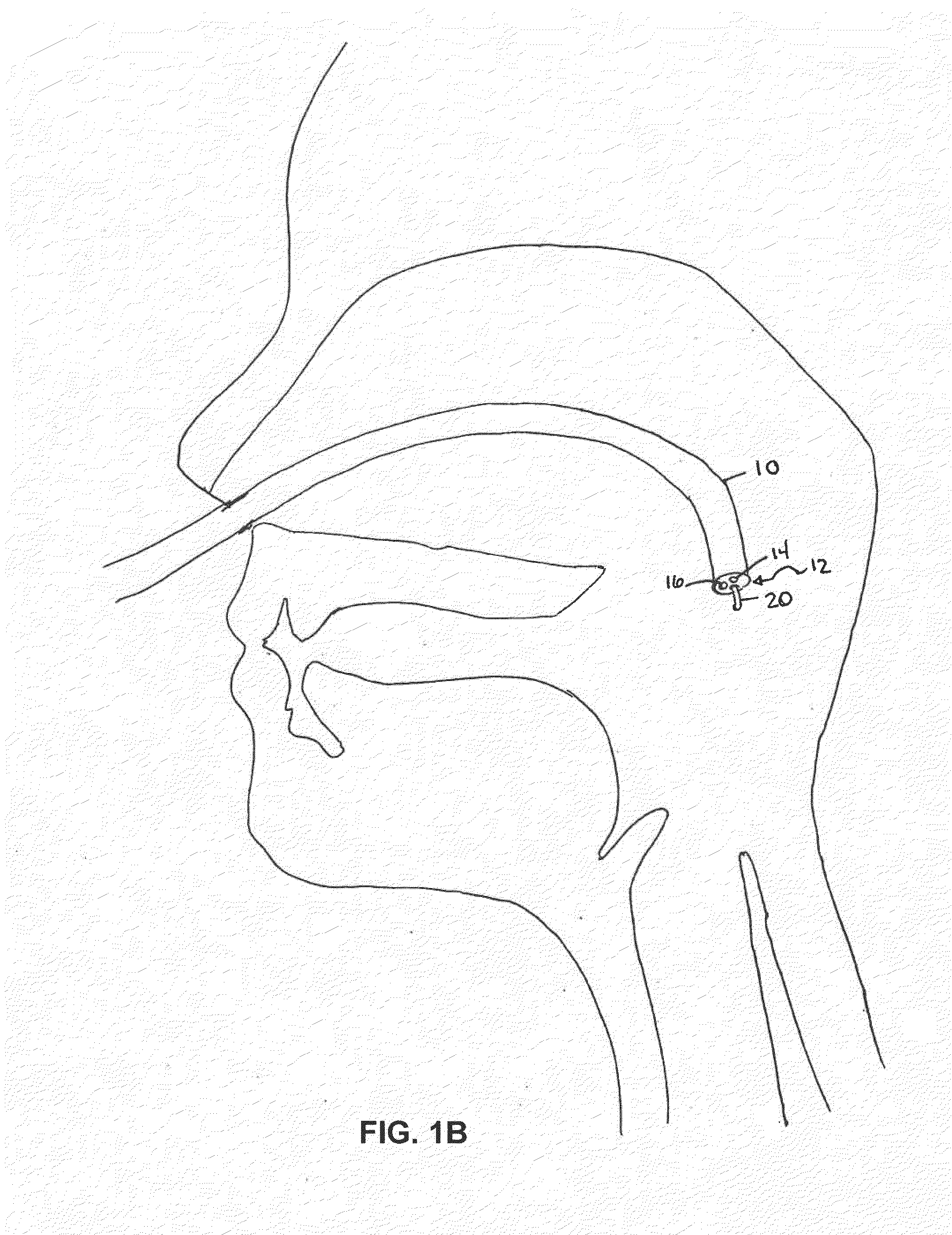Method for cryospray ablation
a cryospray and ablation technology, applied in the field of tissue treatment, can solve the problems of affecting both adults and children, sarcoma and/or lymphoma, head and neck malignancies, etc., and achieve the effects of freezing cartilage and/or, and reducing the temperature of cartilage and/or bon
- Summary
- Abstract
- Description
- Claims
- Application Information
AI Technical Summary
Benefits of technology
Problems solved by technology
Method used
Image
Examples
example 1
Materials and Methods
[0108]Any device adapted to deliver cryogen can be used to practice the invention as described herein. For example, in the method described below, spray cryotherapy was performed with the CryoSpray Ablation™ System (“CSA” System, Model CC2-NAM, CSA Medical, Inc) which has 510(k) clearance by the U.S. Food and Drug Administration and CE mark for use in Europe [as a cryosurgical tool in the fields of general surgery, specifically for endoscopic applications]. The CSA System, a non-contact method of cryotherapy, was used to apply medical-grade liquid nitrogen (196° C.), directly to the tissue via a low-pressure, disposable 7 French cryocatheter introduced through the vocal cords through the working channel of a therapeutic flexible bronchoscope [(Olympus BF-X1T160 or BF-X1T180)]. A waiver was obtained from the Medstar Institutional Review Board (Hyattsville, Md.) such that the data might be reviewed. Patients initially received 4 cycles of 5 second spray cryotherap...
example 2
[0113]Glottic stricture and vocal cord stenosis following radiation:
[0114]The following method was performed using the materials and methods described above in Example 1.
[0115]A 74 year old Caucasian female with a 53 year history of smoking and gastroesophageal reflux disease had recently completed 28 of 33 sessions of radiation therapy for a recent diagnosis of squamous cell carcinoma of the right vocal cord. Over the preceding month, she had developed progressive severe dyspnea, stridor and hoarseness.
[0116]A month prior to presentation, when the symptoms began, she had received a solumedrol taper for her shortness of breath along with a V / Q scan that was negative for pulmonary embolism. Four weeks later, evaluation with fiberoptic laryngoscopy by Speech, Language, Pathology revealed a web-like circumferential occlusion of the glottic opening with a 4 to 5 mm aperture likely a consequence of her radiation therapy. A bronchoscopy and suspension microlaryngoscopy confirmed laryngeal...
example 3
[0117]Tracheobronchiomalacia with partial obstruction of previous tracheostomy tube:
[0118]The following method was performed using the materials and methods described above in Example 1.
[0119]A 33 year old Caucasian female with a 20 year history of smoking and asthma since childhood presented with progressive dyspnea on exertion, recent exacerbations of chronic breathlessness, and an occasional cough that was negative for hemoptysis. CT scan demonstrated the congenital absence of the left lobe of the thyroid and a prominent right lobe. Bronchoscopy revealed significant tracheobronchiomalacia involving the lateral and posterior wall extending from the trachea to the proximal left mainstem bronchus, which further work-up deemed to be idiopathic in nature (FIG. 6). Because of her worsening dyspnea, tracheal stenting with a silicone stent was attempted. While initially tolerated well, roughly 9 months later she was found to have developed extensive granulation tissue at both the proxima...
PUM
 Login to View More
Login to View More Abstract
Description
Claims
Application Information
 Login to View More
Login to View More - R&D
- Intellectual Property
- Life Sciences
- Materials
- Tech Scout
- Unparalleled Data Quality
- Higher Quality Content
- 60% Fewer Hallucinations
Browse by: Latest US Patents, China's latest patents, Technical Efficacy Thesaurus, Application Domain, Technology Topic, Popular Technical Reports.
© 2025 PatSnap. All rights reserved.Legal|Privacy policy|Modern Slavery Act Transparency Statement|Sitemap|About US| Contact US: help@patsnap.com



